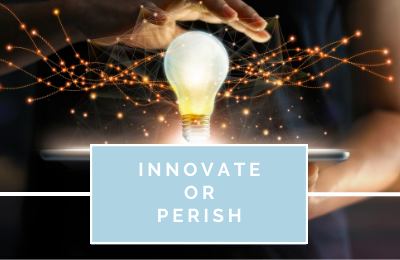Innovate or Perish
The year was 2006. Most people hadn’t heard of Data Warehouse Appliances and the world didn’t have any Data Scientists yet (instead, we called them Statisticians). John Devolites, our General Manager for the Business Unit at that time, presented me with a simple business case: “If you agree to invest $500,000 in a data warehouse appliance, I believe that I can convert it into an analytics solution with tangible revenues. In fact, I feel confident that I can sign-up at least one sizable client, and possibly two.”
At this time, TEOCO had one primary product: BillTrak Pro. We had patented our XTrak technology for processing non-standard inter-carrier invoices, and that portion of our business was thriving, but we needed to innovate and create a new revenue stream. I now needed to create a framework to evaluate investment decisions related to the new analytics solution that John was proposing.
I asked myself three questions:
(1) What is the probability of success,
(2) What is the likely magnitude of success in terms of return-on-investment (ROI), and
(3) How long will it take get a meaningful ROI?
John was an innovator. His leadership resulted in the creation of XTrak with-in his first year at TEOCO. He seemed fairly confident of the merit of this new analytics solution, so I asked our technology team to do a quick and dirty proof-of-concept in partnership with the start-up company who built the data warehouse appliance.
For our first client, we targeted a telecom operator that appeared to be spending $4 Million annually on addressing this business need. The probability of a sale looked reasonably high, and our ROI was compelling. If successful, we would get a return within 1-2 years. We decided to go ahead. This solution was eventually branded as Sonar.
Today, we are on our fourth generation of the solution, and our revenue from Sonar over the last fifteen years has exceeded $200 Million. While our hardware investment to-date has been around $50 million, I can still unequivocally say that the ROI has remained compelling.
One of the areas where TEOCO is putting some of its innovation dollars right now is in the domain of routing and repairing of the undersea cables while using AI/ML techniques to assess the risk of damage from fishing, anchoring, earthquake, and many other related activities.
What lessons have I learned throughout this process? First, it is impossible to win the lottery if you never buy a ticket. Our responsibility is not to avoid risk, but to decide which risks to take and how to manage them. One way I manage risk is by making sure that we don’t fight battles on too many fronts simultaneously. We make a limited number of investments and keep some of our ‘powder’ dry to back those that require additional financial support.
The second lesson is to secure a customer early in the process. At TEOCO, our tendency is to innovate in partnership with our clients. We have created our own Innovation Hub, which is a small team of sharp shooters who can quickly create a proof-of-concept to evaluate an idea. But we rarely go full-steam ahead without first finding a customer that shows a strong interest in buying the solution. This not only ensures that you are solving a real business problem that at least one customer cares about, but they often end up becoming a compelling reference client for future prospects.
The third and final lesson is to understand the risk of not taking a risk – and to invest in both good times and bad. Innovation is a game of hits and misses. While there is a chance of failure associated with any innovation project, in the final analysis, the cost of not taking risks can be much more significant. A business that takes a disciplined approach towards innovation creates a solid recipe for growth and success.
With special thanks to Srinivas Bhogle for his support and contribution to this project.



